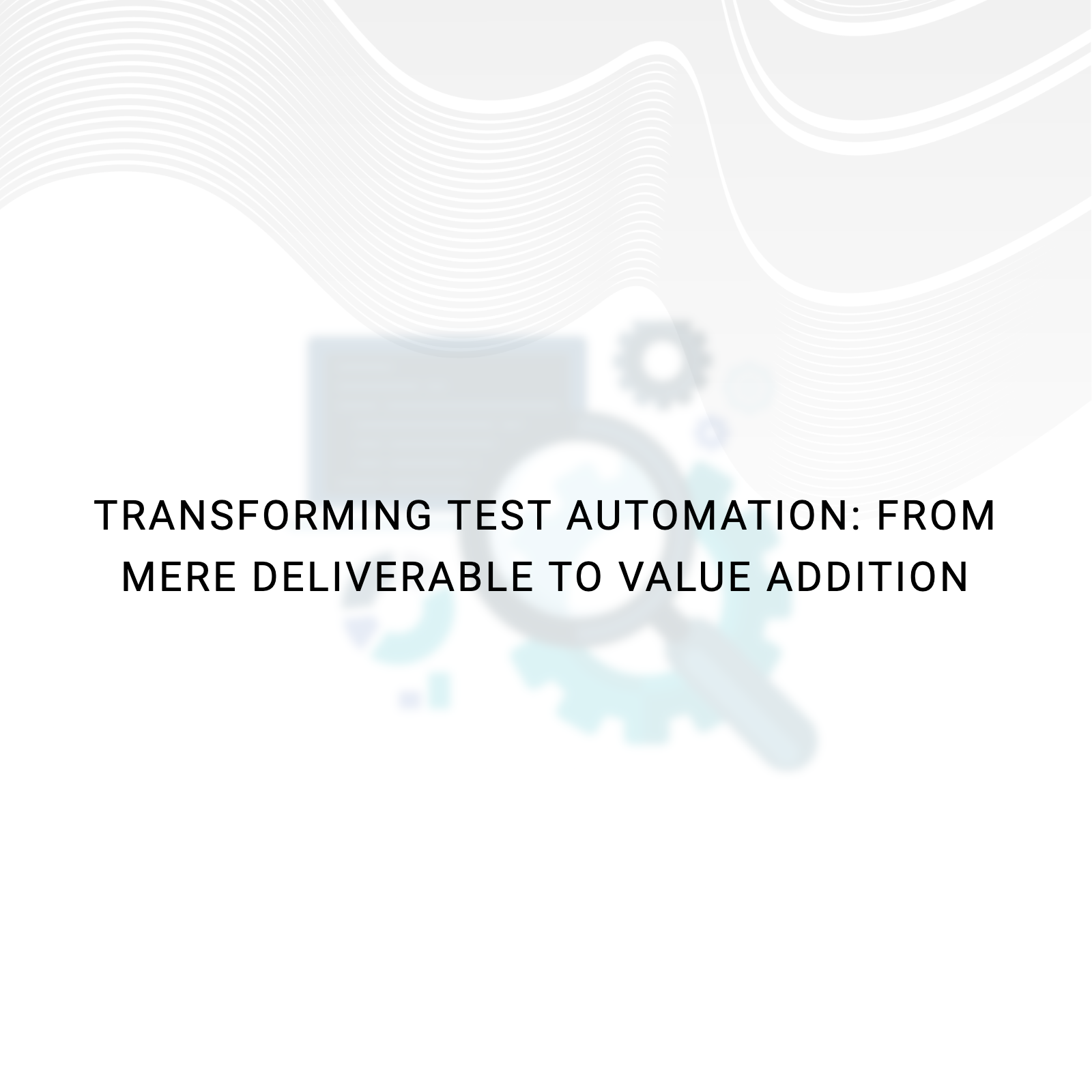Transforming Test Automation: From Mere Deliverable to Value Addition
Tue Aug 13 2024

In the world of software testing, the role and perception of test automation needs to undergo a crucial transformation. Often, teams view automation merely as a deliverable – something to be completed at the end of a release cycle or during product development because it was promised earlier. However, at Testing Mavens, we advocate a paradigm shift: viewing automation not just as deliverable but as a substantial value addition throughout the development process. With many companies focusing on implementing a shift-left strategy, it's critical to have technology in place that allows testing to keep pace with development efforts.
The Misconception of Automation as Just a Deliverable:
Many teams fall into the trap of developing automation merely to complete a deliverable. As a result, the team lacks confidence in relying on these automated tests during the development cycle to ensure quality. This approach, however, misses the true potential of test automation. Merely having some automated scripts in place does not necessarily add value to the product development lifecycle. It's a shortsighted view that limits the effectiveness of testing and the overall quality of the product while increasing the time to release.
Our Approach: Enhancing Value through Automation:
At Testing Mavens, we believe that the primary goal of test automation should be to improve product quality. The key to achieving this is identifying issues earlier in the development cycle and having repeatable, automated tests. This is where the shift-left testing strategy plays a significant role. Test engineers should develop test automation within the sprint, starting from the first sprint of the development cycle. Tests should be created for each user story's acceptance criteria, and these tests should be automated. This way, during development, these tests can run on the deployment pipeline, allowing testers to focus on identifying edge-case scenarios and conducting other exploratory tests.
In-Sprint Automation and Comprehensive Coverage:
Our approach encourages test engineers to ask critical questions: How can we increase coverage? What will make our testing processes more effective? How can we deliver more in less time? As mentioned, the answer lies in in-sprint automation – developing tests that cover backend layers, frontend components, and even performance tests within the sprint. This approach enables testers to identify issues early, complete sprint-level regressions, and integrate these tests into the deployment pipelines, thereby ensuring the release of quality builds to the testing environments.
Shift-Left Testing: A Gradual Yet Strategic Move:
The concept of 'shift-left' testing – moving testing earlier in the development process – is not a simple transition and cannot change an organization overnight. However, small steps can significantly move a team toward this approach. A fundamental step is altering the mindset of test engineers from viewing automation as just a deliverable to seeing it as a tool for efficiency, speed, and quality.
Redefining Automation Beyond Features and Tools:
When we talk about automation, it's not necessarily tied to a specific product feature or functionality. Nor is it about using a common automation tool. It's about building automated solutions that replace manual processes, thus enhancing the overall quality assurance process of a product.
Key Steps for a Shift-Left Approach:
- Change in Thought Process: The key thing is to shift the entire team's mindset to understand that quality is not solely the responsibility of QA; it's everyone's responsibility. It is essential for the engineering team to build the product with testability in mind. Similarly, it's crucial for the product team to involve the testing team in early discussions, enabling more testing at the beginning and shifting what is usually done at the end to the start of the lifecycle. From a testing perspective, it is equally important to change the mindset of the testing team, helping them see automation not just as a checkbox item, but as a crucial tool for efficiency.
- Implementing Metrics for Continuous Evaluation: The second step involves establishing metrics to measure product health throughout the development cycle and to assess the value additions brought by test automation.
Conclusion:
At Testing Mavens, we believe in the power of test automation as a value add, not just a deliverable. This approach revolutionizes the way test automation is integrated into the software development process, ensuring that it is a key driver of quality, efficiency, and speed. The future of software testing lies in making automation a strategic tool for success, and it starts with changing our perception and approach toward it.


